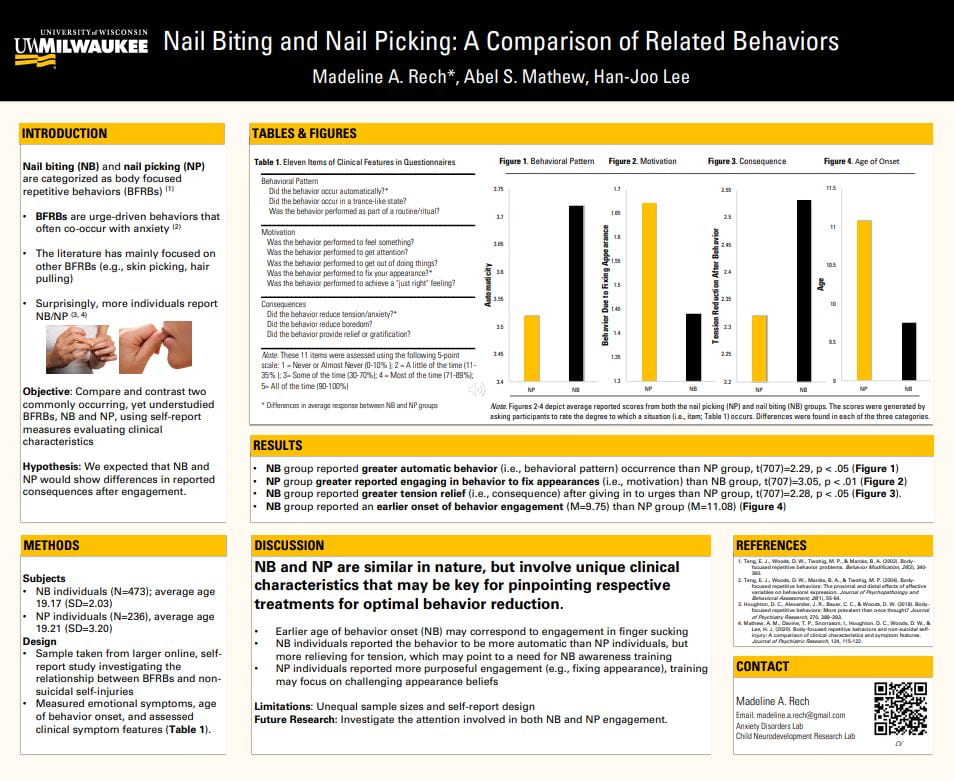Madeline Rech, “Nail Biting and Nail Picking: A Comparison of Related Behaviors”
Mentors: Han Joo Lee & Abel S. Mathew, Psychology
Body focused repetitive behaviors (BFRBs) are urge-driven behaviors, which include skin picking, hairpulling, cheek biting, nail biting (NB) and nail picking (NP). Individuals who engage in BFRBs often experience significant distress and impairment due to the behavior(s). Research has shown comorbidities between differing BFRBs, though each may have distinguishing clinical characteristics and symptom features. The purpose of this study was to compare and contrast two commonly occurring yet understudied BFRBs, NB and NP. Subjects were individuals who predominantly reported NB (N=473) or NP (N=236), with average ages of 19.17 (SD=2.03) and 19.21 (SD=3.20), respectively. The sample was drawn from a larger study investigating the relationship between BFRBs and non-suicidal self-injury (NSSIs), which recruited individuals from two urban universities. Participants completed the Depression, Anxiety, and Stress Scale (DASS-21), as well as a questionnaire evaluating clinical characteristics and symptom features in three domains: behavior, motivation, and consequence. Using a t-test, it was found that individuals with NB and NP displayed similar emotional symptoms, with anxiety rated the highest (minimum score of 15 to be rated ‘severe’) within both groups, t(707)=0.25, p = 0.802; NB anxiety (M=20.31) and NP anxiety (M=20.36) It was also found that reports in the domain of consequence (e.g., how it felt after giving into urges to engage in the behavior) differed between groups but only in the degree to which tension was relieved, with the NB group reporting greater tension relief, t(707)=2.28, p < .05. Interestingly, NB individuals also reported an earlier onset of behavior engagement (M=9.75) than NP individuals (M=11.08). Taken together, it was found that NB and NP individuals had unique clinical characteristics in this sample, which may suggest a need for assessing the behaviors separately, despite the same area of the body being affected.
Click the thumbnail below to open the full sized poster in a new tab.


Very well done Madeline. Are any of These behaviors genetic?
Congratulations! Interesting and thought-provoking work!